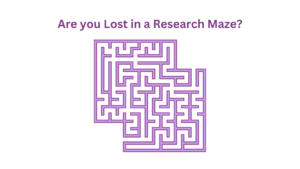
Are you an academic or postgraduate student feeling overwhelmed by your research? Are you having trouble analyzing your data or interpreting your statistical results? One key concept that can assist you is understanding what statistical significance truly means and, more importantly, what it signifies for your research.
What Is Statistical Significance Telling You?
Statistical significance is often misunderstood. It doesn’t “prove” your hypothesis nor guarantee that your findings are meaningful in a real-world context. Instead, it simply tells you that the likelihood of your results being random or due to chance is low.
Consider this scenario: You’re studying the impact of a new intervention on reducing anxiety levels. Your p-value is 0.03, indicating statistical significance. But does this automatically mean the intervention is effective in practice? Not necessarily. Statistical significance alone doesn’t measure the size or practical importance of the effect—it only suggests that it’s unlikely to have occurred by chance.
Avoiding the Pitfalls of Misinterpretation
Many researchers fall into the trap of equating statistical significance with practical importance. I’ve seen many students report “significant” results that were not meaningful and had little relevance in practice. The lesson here? Statistical significance is just one piece of the puzzle.
To ensure that you report your results so that they are both statistically and practically meaningful, it is essential to consider three things:
- Consider sample size: Larger samples can produce statistically significant results even when the effect is small and practically irrelevant. Vice versa, smaller samples can produce statistically non-significant results although the effect size may be reasonably large and practically relevant.
- Evaluate statistical significance and effect size concurrently: Statistical significance tells you if there is a statistical effect, but effect size tells you how meaningful the effect is. Is it enough to make a difference? Is it practically relevant in your research field?
- Use confidence intervals: These intervals provide a range in which you can be highly confident that the value you are estimating lies. They give insight into the precision and reliability of your estimates.
Ensuring Your Research is Practically Meaningful or Has Real-World Impact
Interpreting results can be challenging, especially when navigating between statistical significance and practical significance. Recently, I reviewed a paper in which the author reported statistically significant findings in their study and made recommendations based on these. However, the sample size involved hundreds of cases, and after a closer look, it was clear that the practical implications of the results were limited. The analysis and interpretation need refining to focus on what truly matters to practitioners in their field. This approach strengthened their research and made it more impactful in the real world.
How I Can Help
You’re not alone if you’re struggling to analyze your data or questioning whether your research findings are statistically sound and meaningful. Statistical analysis is nuanced, and correctly interpreting your results is critical to ensuring your research holds up to scrutiny.
With my background in helping faculty and students with their research, I can offer guidance to ensure your results are accurately interpreted, whether in the early stages of your analysis or preparing to publish.
Let’s Connect
Feel free to reach out if you need help ensuring your research meets the standards required for a dissertation or journal. I’d be happy to discuss how we can work together.
Contact us at [email protected], and let’s ensure research excellence.
Hi Merle. I am little confuse in data analysis. I am doing a literature. What am I expected to do in this chapter.
Thanks
Thabisile